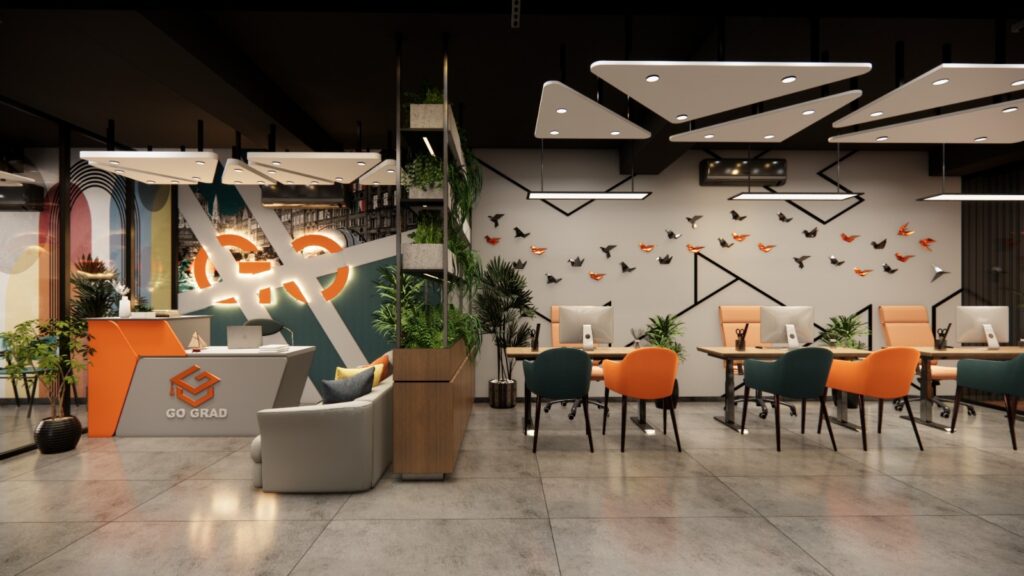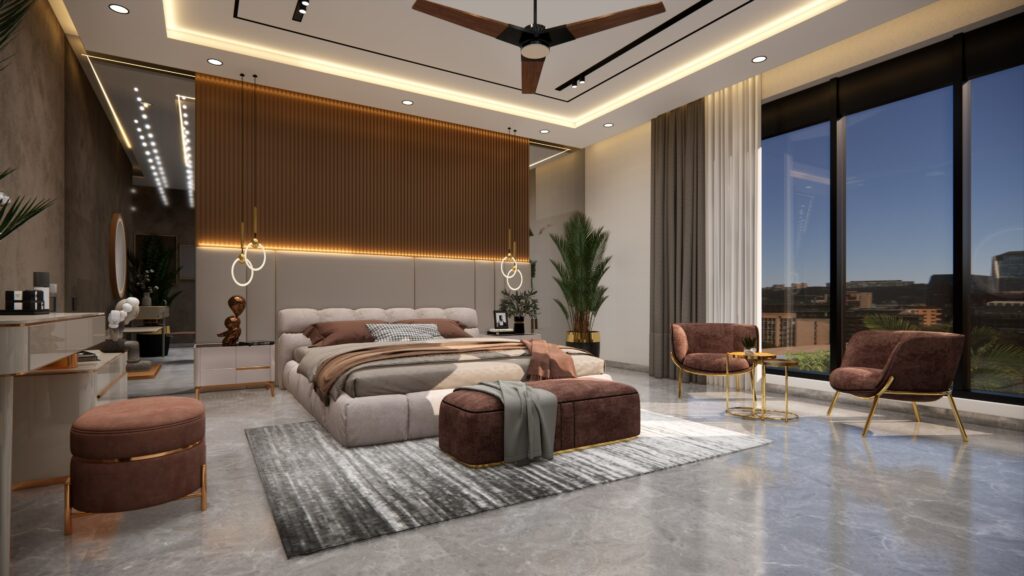Commercial Interior Design
Commercial interior design is about creating environments where businesses thrive. From offices to retail stores, restaurants, and more, the design of these spaces significantly impacts both the people who work in them and the customers who visit. A well-designed commercial space balances functionality, branding, and aesthetics, ensuring that it not only looks appealing but also meets the practical needs of the business.
1. Branding and Identity
One of the most important aspects of commercial interior design is translating a company’s brand and identity into physical form. The design of a workspace or storefront should reflect the company’s values and mission. For instance, a sleek and modern office may reflect innovation, while a cozy, rustic café might emphasize comfort and community.
2. Maximizing Functionality
Commercial spaces must be highly functional. Office designs, for example, need to consider layout, workflow, and ergonomics to enhance productivity. Similarly, retail spaces are designed to optimize customer flow, ensuring that products are displayed effectively and that customers have a pleasant experience.
3. Enhancing Employee Productivity
The design of a workplace directly influences employee satisfaction and productivity. Proper lighting, ergonomic furniture, and thoughtfully arranged workstations can reduce stress and increase comfort. Breakout spaces and collaborative areas are increasingly popular, fostering teamwork and creativity.

4. Customer Experience
In commercial settings such as restaurants or retail stores, the interior design impacts how customers feel. A well-designed space can make customers feel welcome, encouraging them to stay longer and return in the future. Elements such as lighting, colors, and spatial arrangement all play a role in creating an enjoyable and memorable experience.
5. Sustainable Design
Sustainability is becoming increasingly important in commercial interior design. Incorporating eco-friendly materials, energy-efficient lighting, and sustainable furniture helps reduce a business’s environmental footprint while creating a modern, forward-thinking image.
6. Staying Ahead of Trends
Commercial interior design is constantly evolving. Recent trends include open-plan office spaces, bio philic design (integrating nature), and flexible, multi-purpose spaces. Staying ahead of these trends can give businesses a competitive edge by creating a space that feels contemporary and appealing.
Conclusion
Commercial interior design is about more than just aesthetics. It involves a deep understanding of how space influences behavior, productivity, and branding. Whether you’re designing a bustling office or a serene retail store, the right interior design can make all the difference in your business’s success.
